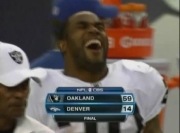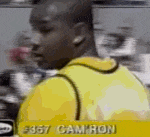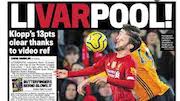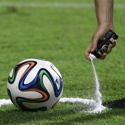|
It is a good informative post. RIP (rest in piss) tiki taka you almost killed the sport we love.
|
|
|
|

|
| # ? Jun 9, 2024 01:19 |
|
I'd read another of those posts for sure tbp
|
|
|
|
the best poster
|
|
|
|
Bogan Krkic posted:I'd read another of those posts for sure tbp
|
|
|
|
you actually didn't mention my least favorite thing about tiki-taka, which was that insufferable, pretentious pundits would drone on and on about how beautiful it was, at least if you weren't some kind of subhuman idiot who liked seeing things like goals, attacking play, and anything other than a bunch of doped-up Spainards passing the ball for 90 minutes.
|
|
|
|
Can someone explain the Uruguay/Ghana Handball in context? Obviously you aren't supposed to hit the ball with your hand, but would that not be considered an intelligent play? edit:Uruguay, not Uganda Blitz of 404 Error fucked around with this message at 22:08 on Jun 21, 2014 |
|
|
|
Blitz7x posted:Can someone explain the Ugandan/Ghana Handball in context? Obviously you aren't supposed to hit the ball with your hand, but would that not be considered an intelligent play? I'm going to go ahead and assume you mean the Uruguay/Ghana handball that Suarez committed at the last World Cup. Yeah, it was intelligent play, because as a direct result of it Uruguay won the match and got into a World Cup semifinal. Suarez was rightfully sent off (not like when Henry crashed the Irish economy and got away with it) and Ghana were given a chance to still win the match with a penalty, but missed. The big reason why it's controversial is because Suarez celebrated like a madman from the sidelines and was completely unapologetic about doing it, basically saying "I would do it again in a heartbeat and so would any of you" and football pundits fell over themselves to talk about how they're such perfect moralistic sporting heroes that they would never handball intentionally to win a World Cup match, which is a load of poo poo because literally anyone in the world would do what Suarez did if they were given the same opportunity.
|
|
|
|
Blitz7x posted:Can someone explain the Ugandan/Ghana Handball in context? Obviously you aren't supposed to hit the ball with your hand, but would that not be considered an intelligent play? it was considered dirty, yet effective at the time and continues to be thought of that way. its one of the few scenarios where doing that would actually behoove your teams chances of winning (dogso is a straight red & penalty)
|
|
|
|
People generally don't like diving because its considered deceiving the referee to gain an advantage. This was someone obviously cheating because his team were out of the world cup otherwise and doing that gave them a slight chance but accepting the punishment as soon as it happened. Suarez got lucky and they did gently caress up. His world cup was over whether or not he stopped it but it proved to be worth it.
|
|
|
|
I see that handball in the same light as Ole Gunnar Solskjaer's tackle https://www.youtube.com/watch?v=1waQJ3dC5ro in that it's not cheating because the punishment for that action is exactly legislated for, and the player weighs up (rightly imo) that the punishment for doing it is better than letting the other team score, and willingly accepts that punishment.
|
|
|
|
Tbp, Italy lost the 2012 final because they were outplayed and had no response to the suffocating passing in the first half. The commonly trotted out excuses were that Italy had no real center backs, with De Rossi playing very admirably as the middle of a three man back line and that Italy had less time to rest for the final. The only real objective thing is that Thiago Motta got injured in the middle of the second half and since Italy has used all their subs, they were forced to chase a game with 10 men on the pitch. It sucked.
|
|
|
|
Could someone suggest like a primer or something before i get into inverting the pyramid. Someone else said it was a little advanced. Any suggestions assuming i know dick about this sport beyond basic position
|
|
|
|
Bogan Krkic posted:I see that handball in the same light as Ole Gunnar Solskjaer's tackle It's exactly that. The player decides the punishment is better than letting the goal in. In a world cup it's a bit more of a risk because you're going to miss two/three games out of a maximum of 7. Suarez is a oval office for celebrating in the way that he did but the handball itself proves he would do anything for the team.
|
|
|
|
Casual fan with questions about that Uruguay/Ghana game from 2010. So before the red card, Ghana got the free kick because of a really bad call right in front of one of the officials. From the video it looked like the guy who judges offsides called the free kick because it was right in front of him. Is this right or can only the main official call fouls? And secondly, if the main ref makes a bad call, can the other officials overturn him? Or can they only inform him of stuff he might have missed, like the Zidane headbutt?
|
|
|
|
The assistant referees can flag for fouls, advise the center ref and help him make decisions, but the final decision is his and he can ultimately override them, even for offside calls.
|
|
|
|
Mordecai Sanchez posted:Casual fan with questions about that Uruguay/Ghana game from 2010. So before the red card, Ghana got the free kick because of a really bad call right in front of one of the officials. From the video it looked like the guy who judges offsides called the free kick because it was right in front of him. Is this right or can only the main official call fouls? Yes, the Assistant Referees (the two guys on the sidelines) have the power to signal for fouls if they believe the referee didn't see it and that he would have called it if he had. However it is ultimately the referee who blows the whistle and he can choose to wave down the AR's flag and continue. At this level though you really don't see that very often, because you're always working with the same crew of guys and have a great deal of trust in them, and also you're in constant communication via the headsets. So basically, the referee is the main man, and while the ARs can provide input all decisions ultimately lie with him. The referee is allowed to change his mind up until he restarts play, so that does potentially give some time to discuss. Again, you very rarely see this at high levels though.
|
|
|
|
So with the death of tiki-taka it looks like football is going to be more interesting now, and this awesome World Cup has stoked my interest in following a team during the league season--though I do recognize that it is likely very few matches will be as amazing as the ones that have happened so far in the WC. Anyone have any recommendations on a fun team to watch? A friend of mine recommended I take a look at the Premier League teams since finding good online streams of their games is relatively easy. As far as personal preferences, I live in the US but would like to support a European and/or Latin American team. Teams whose games can be watched online a plus, and even better if it's with Latin American commentators. Thoughts?
|
|
|
|
Are there any particularly good or noteworthy defenders to watch in the World Cup? From all the information that's been given, it seems like all the famous and high-paid players are those who score, which makes sense but it would also be interesting to know if there is a team that has a player known for defense, just to add some variety to the games.
|
|
|
|
NEED TOILET PAPER posted:So with the death of tiki-taka it looks like football is going to be more interesting now, and this awesome World Cup has stoked my interest in following a team during the league season--though I do recognize that it is likely very few matches will be as amazing as the ones that have happened so far in the WC. Anyone have any recommendations on a fun team to watch? A friend of mine recommended I take a look at the Premier League teams since finding good online streams of their games is relatively easy. As far as personal preferences, I live in the US but would like to support a European and/or Latin American team. Teams whose games can be watched online a plus, and even better if it's with Latin American commentators. Thoughts? Requoting myself from earlier: the posted:There was a flowchart somewhere, but, basically the "big 5" that have multitudes of fans across the world are:
|
|
|
|
NEED TOILET PAPER posted:So with the death of tiki-taka it looks like football is going to be more interesting now, and this awesome World Cup has stoked my interest in following a team during the league season--though I do recognize that it is likely very few matches will be as amazing as the ones that have happened so far in the WC. Anyone have any recommendations on a fun team to watch? A friend of mine recommended I take a look at the Premier League teams since finding good online streams of their games is relatively easy. As far as personal preferences, I live in the US but would like to support a European and/or Latin American team. Teams whose games can be watched online a plus, and even better if it's with Latin American commentators. Thoughts? Tottenham Hotspur.
|
|
|
|
Furious Lobster posted:Are there any particularly good or noteworthy defenders to watch in the World Cup? From all the information that's been given, it seems like all the famous and high-paid players are those who score, which makes sense but it would also be interesting to know if there is a team that has a player known for defense, just to add some variety to the games. thiago silva (bra) varane (fra) hummels (ger) barzagli (ita) lovren (cro) kompany (bel)
|
|
|
|
the posted:Requoting myself from earlier: Ah, thanks! I'll keep those teams in mind and keep my eyes peeled during the season for whatever matches so I can see them in action before making my decision.
|
|
|
|
NEED TOILET PAPER posted:Ah, thanks! I'll keep those teams in mind and keep my eyes peeled during the season for whatever matches so I can see them in action before making my decision. Best advice is to watch as many games as you can regardless of who is playing and see who you become attached to. In all likelihood it will be one of those teams listed, because they are generally the teams most likely to score goals / play attractive football etc etc but try to keep an open mind about it. When you do make your decision, please don't try and come up with any justification more than you liked them best (really you shouldnt be making a decision at all, it should kind of just happen), its incredibly annoying reading about how people chose to support liverpool because of their similarities to their favourite baseball franchise or the like. Just get into supporting them and let that be it.
|
|
|
|
Watch all the BPL, La Liga, Bundesliga, Serie A you can, but go watch whatever your local side is too. Even if it's some PDL U-23 team of scrubs in nowheresville, you'll have fun with that too.
|
|
|
|
In EPL I ended up choosing West Bromwich Albion because they have a funny name.
|
|
|
|
sassassin posted:Fabregas left Barca to come to England at 16, became the best technical player in the league, then went home and couldn't get in Barca's starting 11. is there youtube or articles about this id love to hear more
|
|
|
|
I read this on the espn site:quote:Tiebreakers Has g) ever happened... ever?
|
|
|
|
the posted:I read this on the espn site: Not in the World Cup, in my lifetime anyway. In league football, they tend to go for a one off playoff game rather than G
|
|
|
|
Waroduce posted:Could someone suggest like a primer or something before i get into inverting the pyramid. Someone else said it was a little advanced. Any suggestions assuming i know dick about this sport beyond basic position Inverting the Pyramid is definitely a dense book but I can't think of a more comprehensive read on the evolution of the game. I can't think of anything lighter to recommend off the top of my head but just google around. Maybe try reading about the various positions as a starter before you start trying to figure out how it all fits together. And just keep asking questions here. Maybe tbp will drop another awesome post specifically for this...
|
|
|
|
highme posted:Watch all the BPL, La Liga, Bundesliga, Serie A you can, but go watch whatever your local side is too. Even if it's some PDL U-23 team of scrubs in nowheresville, you'll have fun with that too. This bears so much repeating. Watching the height of the sport on TV is great, but the experience of going to a live game, regardless of the level of competition, is something else entirely. Support your lovely local side.
|
|
|
|
Support the hell out of your local side but definitely support Manchester City because gently caress United.
|
|
|
|
Waroduce posted:Could someone suggest like a primer or something before i get into inverting the pyramid. Someone else said it was a little advanced. Any suggestions assuming i know dick about this sport beyond basic position Okay I'll do my best to explain some of the basic concepts here (serious effortpost incoming), this will basically be about the positions and some of the more commonly used formations at present time. Bear in mind as well that I primarily watch the Premier League, so maybe Bielsa's 3-3-1-3 or Allardyce's 4-6-0 has caught on in Germany or Italy but I won't cover them here. One very important thing to bear in mind when watching football or reading about positions or tactics is that everything--everything--is just guidelines and frameworks, and some players or managers will break those guidelines and frameworks, and set their team or their players up in a way that almost no one else has ever done. Sometimes this works, and sometimes it fails. Sometimes it only works because of the specific players that are being used, who may be very intelligent or have world-class technical ability or be so doped out of their skin that they can run 15 km per game; sometimes it only works because the manager is brilliant and can motivate his team to play in an innovate way that counters whatever the opponent is doing perfectly; and sometimes it works because it is simply a more effective way to play football that no one has ever tried before. Sometimes these new ways of playing will be tried by other teams and succeed, sometimes they'll be tried and fail, sometimes they won't be tried at all. This success or failure depends on so many things, like the skill of the players at the new team, the tactical knowledge and motivating skills of the manager, the strength of the opposition you're playing against, and the playing style of the league, as well as whether or not the tactic actually works. So tiki-taka worked brilliantly for a few years at Barcelona. That doesn't mean that trying to apply the same playing style in the Championship (second league of English football) would work, because your players don't have the technical skills to pull it off, you haven't got your own Lionel Messi to unlock games, and you're more likely to just get kicked out of the game. The same goes for formations, not just playing styles. Formations are positional guidelines that tell you absolutely nothing about how the team sets out to play. The exact same formation, whether it's 4-4-2 or 4-3-3 or 4-2-3-1, can be played in any number of different ways. It can be defensive, with more players hanging back to stop attacks, or it can be offensive, with more players getting forward to support the attack. It can be possession-based, with players making themselves available for short passes to keep the ball instead of making runs to try riskier through balls which may put you in on goal but may also risk the defence intercepting your pass. They may be closing down, with players pushing forward to squeeze the opponent of space and trying to win the ball back high up the pitch, or they may be deep-lying, dropping back when the opponent has possession to restrict the space they have to attack with in your own half. They may be attacking, wanting to have the ball and run with it, or counter-attacking, letting the opponent bring the ball up the field before winning it back and trying to score as quickly as possible on the break while the opposing defence is outnumbered. They may even be purely defensive, like Inter Milan in the famous game against Barcelona where they didn't even try to score, but rather just gave the ball back to Barcelona when they won it, because they wanted to maintain their shape and not risk making any mistakes with the ball. Finally, the same thing goes for positions. The same position on the field, say a midfielder in the centre of the park, can play a number of different roles depending on the player's own skillset and their tactical instructions, how they fit into the manager's plan (and whether or not they actually pay attention to those instructions). They could be a defensive presence who doesn't get forward, or an attacking presence who goes up to support the forwards, playing from the same position. Sometimes a player will play both these roles in the same match. Yaya Toure at Manchester City, for example, is often a defensive presence in central midfield, defending the backline, but also goes on rampaging runs forward and his managers have been known to substitute in a defensive player instead of an attacking one, even when behind in the game, because that extra defensive presence will free Toure up to get forward more and change the game. Football is a very, very fluid game in which there are millions of ways to play. It's really unlike any other sport in that respect. That all being said, here are some general guidelines about the positions and some common tactics. Positions: Goalkeeper - The goalkeeper is a unique position on the field and you've probably already realized that. He wears a different coloured kit than everyone else, he wears gloves, he stays in his own net for the whole game instead of wandering around, and he is the only player allowed to use his hands, which he uses to try and stop the ball from going in his goal. He is only allowed to use his hands inside the penalty area, which is the eighteen-yard box around the goal (it's called the penalty area because fouls committed by the goalkeeper's team in their own area will result in a penalty rather than a free kick), and if he uses his hands outside this area it is a foul. This is very rare--generally the only time you'll see it happen is either a) if the goalkeeper is an idiot; or b) if conditions are very wet and the goalkeeper comes out to claim a ball at the edge of the area but can't stop his momentum and slides outside the area. In the current laws of the game goalkeepers cannot use their hands to pick up the ball if it was intentionally passed back to them by a player on their own team. This is a relatively recent change, so if you're watching old highlights you may still see this happen. It leads to some questions about what does or doesn't count as an intentional backpass, but generally this rule is pretty common sense. While goalkeepers generally are all good at a few things, there are a couple ways to use your goalkeeper. First of all, almost all goalkeepers are tall, big, have a long reach, good reflexes, and can jump/dive very far. This makes them a bigger obstacle and means they're able to get further across their goal to stop shots. It also means that it's harder for them to get shoved around in a crowded penalty area during corner kicks or free kicks. Being bigger gives them more weight to throw around. Some goalkeepers are renowned as good shot stoppers, which means they generally stay in their goal and have great reflexes to stop shots, but they can be exposed if their defensive line is playing higher up or if teams throw a lot of crosses into the area. Some goalkeepers are great at controlling their area--they may shout at their defenders and organize the defence well, or they may be quick off their line and grab crosses out of the air before the opposing strikers can get to them. Some goalkeepers are played almost as an eleventh outfield player, called sweeper keepers. They will get further up the pitch and use their feet more to be available as an outlet for passes from the outfield players. They will also come rushing off their line very quickly to pick up through balls before the striker can get to them, rather than waiting in their goal to try and save the shot. The most prominent example of this in recent years is Victor Valdes at Barcelona, who was not bad at stopping shots but much better at playing with his feet and coming off his line, which suited Barcelona's tiki-taka because they restricted the opposition's chances so well. Goalkeepers generally wear the number 1. Full back - Full backs play on the side of defence. Generally they are used in a four man defence, with one left back and one right back either side of two centre backs. They are primarily defensive players who are expected to hold their defensive line and stop players from getting past them. They have to be quick and skilled defensively because they end up in one-on-ones with opposing wingers all the time, and wingers tend to be fast and tricky players who are good at beating single defenders. However, full backs also almost always have to have good stamina and be willing to get forward up the pitch to support their midfield from the side, or even support the attack by putting in crosses. The exception to this is in very defensive playing styles, where full backs might stay back at all times to prevent breaks. In more fluid styles they may do something like have one full back get forward while the other one stays back, or have one get forward while a midfielder fills in in his defensive position. Sometimes centre backs get played at full back, which is generally a more defensive move (or one made out of desperation because you have no full backs) because they will be less mobile, less attacking, less skillful, and more defensive. You will sometimes see full backs referred to as wing backs. The technically correct usage of this term comes from when teams would play with a three-man defence (three central defenders). The full backs outside them were then not needed in defence as much, and were free to play much more attacking roles. They became known as wing backs, who were players that would run up and down the sideline all day, helping out in defence when needed but getting far enough up the pitch to essentially play as wingers when on the attack. Frequently teams playing with wing backs would not have any wingers or wide midfielders, so wing backs were the only wide outlet their team had. Nowadays very few teams use three central defenders on a regular basis (though it does get used as a counter to good attacking strikers), so the actual wing back position is rare to see. The term is still used, however, generally to refer to full backs who use their position to attack aggressively up the field and provide that 'winger from the backline' attacking option that wing backs used to provide. Probably the most prominent player in this mould is Dani Alves, for both Barcelona and Brazil. He tends to spend most of his time playing as a winger, high up the pitch, and his team will cover for this defensively by having extra defenders or midfielders fill in for him defensively. They also tend to pair him with a player who moves towards the centre of the field from the touchline and creates space for him on the overlap. In the current World Cup Dani Alves and Hulk are paired down the Brazilian right flank, so Hulk cuts inside and Dani Alves overlaps. Centre Back - the centre backs are generally the most defensive outfield players on the team. They play in the centre of defence (of course), in between the full backs, and there are always two or three of them unless centre backs are playing full back as well. Teams literally never set out to play with only one centre back, because that means that a striker only has to beat one defender in the centre of your defence to have a one-on-one with the keeper. Your typical centre back is tall and good at jumping and heading the ball away. He has good positioning sense and tactical discipline to stay where he needs to be and intercept balls aimed at the strikers. And he is good at marking opposing players and making tackles, either standing up or sliding in, to prevent players from getting past him and running at the goalkeeper to score a goal. When you see a really good defensive performance, generally it's the centre backs doing the lion's share of the work heading crosses away from goal, tackling opposing strikers, and intercepting through balls. Centre backs will also often go up the field to the opposing goal for corner kicks and some free kicks. The reason for this is that they're tall and good at heading the ball. Corners and free kicks are usually sent in at head height to be headed in for a goal, and since central defenders are some of the best headers on the team they get sent up to score a goal from these set plays. Martin Skrtel, for example, scored 7 goals last season for Liverpool, mostly by heading in corners. Some central defenders are also good with their feet, and are expected to contribute to team passing, either by stepping up into midfield or simply by being an outlet for the midfield if they're being closed down. These are sometimes referred to as ball-playing defenders, but increasingly this is just a role that central defenders are expected to be able to do, as almost every team passes back to them frequently. Thiago Silva and David Luiz of Brazil are probably the best example of this in the World Cup, as they can both step forward into midfield and are very good at playing with the ball on attack as well as defending it when the opposing team has the ball. It's more important for a central defender to be good at defending than playing the ball, though. If they were that good at playing it they should have found a different position to play. Defensive midfield - defensive midfielders are expected to stay back, not get up the field to help the attack, and protect their defensive backline instead. They tend to be good defensively, but better at positioning and tackling than at heading the ball--they are definitely not just another centre back who plays a little further forward, though some centre backs (David Luiz and Phil Jones, for example) do get played in defensive midfield at times. Some of the best defensive midfielders of the modern era have been really short and would not make good centre backs--Claude Makelele is the best example here. The stereotype of defensive midfielders is that they are 'destroyers' who are put on the field to break up opposition plays, either by tackling the opposition or by intercepting their passes, and then give the ball to a more creative player on their team who will start their own attack. A lot of defensive midfielders are more skilled than that, though, and can also contribute to attacking play, but their tactical instruction is to stay back and play defensively so they don't get very far forward. Probably the best pure defensive midfielder at this World Cup is Javier Mascherano of Argentina, so watch him if you want to get a feel for the position. Defensive midfield is also often referred to as holding midfield, though this is a much more fuzzy and vague term that tends to just mean 'any midfielder who stays back sometimes instead of being up playing as a striker constantly'. Not to be confused with defensive midfielders are deep-lying playmakers. They play in a very similar part of the pitch as defensive midfielders, but their role is different. They still have to be good defensively because of where they play on the pitch, but they also take a very involved role when their team has the ball. They will look for long passes that open up the defence, and are the closest thing football has to a 'quarterback' in the American football sense--this role is sometimes even called the 'quarterback' role, but please don't call it that. A good deep-lying playmaker can run the entire midfield, having a vantage point from far back on the field that lets them see the entire shape of their team's attack and the other team's defence, and can control the midfield like a general, telling their players where to go, putting in passes that split open the defence, and seeing plays developing before anyone else. The best example of this role in the World Cup, and probably in the entire world, is Italy's Andrea Pirlo, so watch him if you want to get a sense for how this role works. Attacking midfield - attacking midfielders play much further up the pitch, and contribute much more to the attack than the defence. They are often very good technical players, able to dribble the ball past opposing players to find some space for a shot or a pass. They generally have to be quick and have good movement, so that they can find space in the middle of a crowded defence, and are expected to be clever and creative to see passes that will put their teammates through on goal. Attacking midfielders stereotypically look for through passes that put their teammates through, but may also dribble past players to create chance for themselves, or get on the end of passes from other players to shoot and score goals--again, football is a very fluid game. Attacking midfielders are usually not expected to contribute much to defence, but in a team that wants to press high up the pitch their attacking midfielders may close down the opposition just as much as the rest of the team. But their primary purpose is to find some space, get on the ball, and either score or create goals. You will sometimes hear attacking midfielders referred to as being 'in the hole'. This is a bit of an outdated term that refers to the space between the midfield and attack. In the old days, when a lot of teams played 4-4-2 (we'll get to this in a minute), the rigid line of defence and rigid line of midfield would sometimes have a little gap of space open up between them, and some midfielders started playing in that space between the lines, making them harder for the opposition to pick up and defend against. This space became known as the hole, so attacking midfielders were those who played 'in the hole'. Anyway, probably one of the best attacking midfielders to watch in this role at the World Cup is Brazil's Oscar. Central midfielders - central midfielders are like a cross between defensive and attacking midfield. They play in the centre of the pitch and are expected to do a little bit of everything. They have to be good at defence and offence, good at running, good stamina, good at passing, and good technical ability. Essentially, they're expected to help out in both defence and attack, and have to be good enough at both that if they end up in a crucial position, whether making an important tackle or through one-on-one with the keeer, they're good enough to make the tackle and score the goal. Their primary role, though is the transition phase between those two, defence and attack. They receive the ball from the defence, and they send it up to the offence. They contribute to the defence, then turn around and contribute to the offence. However, it can be very hard to pin down this role because players who play in the centre of midfield may also be defensive or attacking midfielders, who start in a central position but then either drop back or move forward up the pitch. Defensive central midfielders are generally where the term 'holding midfielder' comes into play: these are central midfielders who hold their position in the middle of the park, not as far back as pure defensive midfielders but definitely not getting as far forward as dedicated attacking midfielders. Again, though, it's a fuzzy term. Central midfield is a hugely important area for any team. If you can't control the centre of midfield you will probably lose the game. It's kind of like the middle squares on a chessboard. Controlling the centre of midfield lets your team play the way you want to, rather than reacting to the opposition. You can move the ball out to the wing if you want, you can move it up to the forwards if you want, you can just keep it and play triangles around the opposition if you want. If you control the centre of midfield, you decide how the game is played. As a result, the 'midfield battle' is hugely important to any match. As we'll see in a minute, formations have reacted to this by adding more midfielders and taking away from other parts of the pitch, which often leads to a very crowded centre of midfield but more space opening up elsewhere. One of the best central midfielders at this World Cup is France's Yohan Cabaye, so keep an eye on him. Wide midfielders/wingers/wide forwards - I'm lumping all of these together because there's some significant overlap between these three terms. Essentially, these are players who play primarily from the wing. They start out near the touchline rather than starting in the centre of the pitch. Wide midfielder is a term generally used to describe a player with the skillset of a central midfielder, but who plays out wide. They're expected to protect the fullback behind them while also getting forward to contribute to the attack, generally by crossing from a wide position. Wingers are a faster, more offensive version of this role. They're quicker and have more technical ability so that they can dribble past opposing defenders and either head for goal themselves to shoot or make a pass, or to run for the byline (the goal line, but near the touchline instead of the centre) and cross from a more attacking position. The downside to this is that wingers are further up the pitch and thus tend to contribute less defensively. And wide forwards are like strikers but played out wide. They generally receive the ball and look to cut in and head for goal themselves rather than crossing, but they start wide to stretch the defence and make room for themselves and other players. These terms are relatively interchangeable, and by far the one you'll hear most often is 'winger'. Wingers generally play with the same foot as the side of the pitch they're assigned to, so right footed players on the right wing and left footed players on the left wing. The reason for this is that crossing with that foot is easier when you're running towards the opposition's goal, rather than having to turn around and face your own goal to put in a cross. However, there has been a trend in recent years to reverse this and play with a left footer on the right and a right footer on the left. Doing so makes it easier for the player to cut inside and shoot at goal with their preferred foot. One prominent winger at this World Cup is the Netherlands' Arjen Robben, who plays on the right wing but will always look to cut inside and shoot with his left, because he's hilariously one-footed, to the point where a running TRP meme is that Arjen Robben actually doesn't have a right foot. Strikers/Forwards - strikers, or forwards, lead the line and are generally the closest player to the opposition's goal. They're expected to be good at scoring goals. Scoring goals is their primary job. Some strikers are also good at other things, like dragging opposing defenders out of position and creating space for their teammates, or heading the ball down so their teammates get it and score, or holding the ball up to let their team recover from a defensive phase, or other things, but their primary job is to score goals and if they can't do that they are not a very good striker. That being said, strikers have different skillsets for scoring goals. Some of them are big and strong and are good at getting on the end of crosses to score with their head. These strikers are often called 'target men' because they are the target for crosses and long passes. Cote d'Ivoire's Didier Drogba, for example, is really old now but was one of the best target men in the world for many years. Some strikers are quick and have good movement and technical skill, and are great at getting on the end of passes to score goals however they can. The Netherlands' Robin van Persie and France's Karim Benzema are both examples of this kind of striker--although both are also fairly tall and can head the ball, they aren't really target men because their team plays in such a way that aiming the ball at their head isn't their primary goal. And some strikers drop back towards the midfield to help link up play with their midfielders and to drag the defensive players out of position. When they're played with another striker these players are generally referred to as deep-lying forwards. When they play as the sole striker but still do this, they're referred to as the now-ubiquitous false nine. Don't ask where the term false nine comes from. These players are still expected to score goals but will generally do so by having good movement running from a deeper position, rather than by constantly playing right up against a defender. Argentina's Lionel Messi or Germany's Thomas Muller are examples of deep-lying forwards/false nines in this World Cup. Bear in mind though, when thinking about positions, that players can play more than one position. Most players specialize in one role but are also competent at others. A centre back who's a little quicker and more skillful can fill in as a full back or defensive midfielder. A full back can play further up the pitch as a wide midfielder or winger. Defensive and attacking midfielders can play in the centre of midfield, and vice versa. Some attacking midfielders can play as strikers or wingers, and some strikers and wingers can drop back into attacking midfield. Some players can play all over the pitch. And there's many more combinations than that. Generally the only 'out of position' you'll almost never see is goalkeepers playing in the outfield, or outfield players playing in goal. This usually only ever happens if the goalkeeper gets injured or red carded and the team have already used all their substitutions, forcing an outfield player into goal. Usually playing someone 'out of position' means they will apply their own specialized skillset to the new position and role. You might want this, for example playing a fullback on the wing to mark a dangerous opposition player further up the pitch. But some players play equally well in multiple places, adjusting their play for the new position. Lionel Messi, for example, can be devastating whether he's played on the wing, as a striker, or in attacking midfield, and there's really no wrong way to put him in any of those positions. Formations: Just as important as the positions are how they're arranged. I'll only cover a few of the more common ones because holy poo poo this post is long enough already. 4-4-2 (The Classic, Old Faithful, England Will Play Four-Four-loving-Two) and 4-4-1-1   4-4-2 and its bastard lovechild, 4-4-1-1, are really common formations in England especially. The idea is to have two lines of four players who play together. Four defenders, four midfielders, and then two strikers ahead of them. Sometimes the wide midfielders stay in line with the central midfield, sometimes they're quicker and get forward more to play as wingers. Generally one of the central midfielders will have a more defensive role and one will have a more attacking one, and generally one forward will lead the line and one will drop back a little bit. If this player drops back enough (into 'the hole') then it may be referred to as a 4-4-1-1 and that player may be referred to as an attacking midfielder rather than a striker. 4-4-2 can be a defensive formation if the two banks of four sit back a lot and play defensively. Iran against Argentina was an example of this at this World Cup. It can also be an attacking formation if the players push up and are given freedom to leave their positions and roam around the pitch. However, 4-4-2 eventually ran into a serious problem, which was that it only has two midfielders in the centre of the park. Some teams started countering this by taking a player from somewhere else and putting them in central midfield, giving them a 3-on-2 midfield battle and a serious advantage. The formations that developed from this idea, and that developed to counter them, are the other ones I'll talk about below. This is also the reason that there aren't very many teams playing a 4-4-2 as their primary formation at this World Cup. 4-3-3 and 4-5-1   These two are very similar to each other, it depends on how exactly the players are told to play, which specific players are selected to play in the wide roles, and what the media decides to call it. Essentially the idea is that you take one of the strikers from the 4-4-2 and put him in midfield instead, and then push your wide midfielders up into wingers because you no longer need their defensive support but you need them to support the attack more instead. This gives you three central midfielders, letting you dominate the midfield if the other team only plays two. Sometimes one of these three will be a dedicated defensive midfielder, freeing up the other two central midfielders to get forward and support the attack. On the wings, the players pushing up are really what determines the difference between a 4-3-3 and a 4-5-1. If you still play midfielders there and their primary job is to support the lone forward, it's generally considered a 4-5-1. If you play forwards there and their primary job is to get in the box and score goals, it's generally considered a 4-3-3. There are of course bastard hybridizations of these, and teams who 'play 4-3-3 in attack and 4-5-1 in defence' and other poo poo, who cares, again, football is a very fluid game. This is a versatile formation which can be strong defensively with the added defensive midfielder but can also be strong attacking with the attacking trio, often called a 'front three'. France have been playing a 4-3-3 in this World Cup with great success. Really, between 4-3-3 and the final formation we'll examine, it's just a matter of personal preference and how the manager wants to set out his team. 4-2-3-1 (The Modern Fashion)  This is the other reaction to 4-4-2's lack of a central midfielder, and probably the most popular and common formation in world football today. The deep-lying forward drops deeper and becomes an attacking midfielder, and the wide midfielders push up to distinguish it from a 4-4-1-1. 4-2-3-1 plays with two holding midfielders, whose job it is to protect the backline while the 'front four', the 3 and the 1 ahead of them, play the more attacking game. Again, that's a guideline and each team plays differently. Nowadays at the top level, the '3' of attacking midfielders and wingers is generally very fluid and these players interchange a lot. They may even interchange with the forward, leading to a very fluid attack where any player can pop up anywhere. Argentina is an example of this in this World Cup. They have their backline, then two holding midfielders in Javier Mascherano and Fernando Gago, and then they have a fluid front four of Angel di Maria, Sergio Aguero, Gonzalo Higuain, and Lionel Messi, where any of the four can really play anywhere, and they all interchange constantly to try and unlock the defence, until they give up and just let Messi fire a wondergoal to win the match. On the flipside, Brazil are another example of a 4-2-3-1 but one which is much more rigidly built around a specific game plan. They have their backline, but their fullbacks (Marcelo and Dani Alves) are given more license to get forward. The two holding midfielders, Luiz Gustavo and Paulinho, stay back to protect the backline, especially when Marcelo and Alves get forward. They then have their bank of three, with Oscar in the centre as the attacking midfielder, Hulk on the right and Neymar on the left. The two wide forward cut inside and go for goal, leaving space for the fullbacks to overlap on the outside. And Fred plays up front on his own, being a shitheap and dragging defenders around to create space for other players to run and pass into. 4-2-3-1, again, is a versatile formation. Sometimes the backline and the two holding midfielders will all stay back, making it a very defensive formation and relying on the front four to score goals. Sometimes they all push up, leaving only the two central defenders back, making it a very attacking formation. Again, it's more of a framework to impose your own players and tactical ideology onto than a rigid formation that can only be used one way. I'm going to stop now. I hope, though, that my central thesis--football is a fluid game with guidelines instead of rules when it comes to tactics, formations, playing styles, players, and positions--got through. vyelkin fucked around with this message at 16:47 on Jun 22, 2014 |
|
|
|
the posted:I read this on the espn site: Someone else mentioned that it probably hasn't happened in the World Cup, but it definitely has happened in continental competition. http://en.wikipedia.org/wiki/2000_CONCACAF_Gold_Cup quote:With all three games in Group D ending in ties and Canada tied with the Republic of Korea on every tiebreaker, a coin toss was used. Canada won and advanced to the quarter-finals. They went on to win the championship, upsetting defending champions Mexico in golden goal extra time 2–1. They defeated Trinidad and Tobago in the semi-finals 1–0 after Craig Forrest saved a first-half penalty, and, already assured as CONCACAF champions, topped invitees Colombia 2–0 in the final. e: also if you're wondering why Colombia and South Korea are in the North American competition, that's just how things went
|
|
|
|
loving hell vyelkin that's a sizable effort post, and a good one at that. I know you probably don't want to write any more words about it all, but there's been quite a few teams playing with a 5 man back line so far this World Cup, and it's been interesting to me that it's not just the smaller teams trying not to get demolished. The Netherlands ffs have shown up with a back 5 and Robben playing almost entirely as a striker this time and its weird, and I'm blaming Bielsa's Chile entirely for it.
|
|
|
|
Azerban posted:Someone else mentioned that it probably hasn't happened in the World Cup, but it definitely has happened in continental competition. quote:A qualification competition was held in the United States in December 1999. Hmm
|
|
|
|
Bogan Krkic posted:loving hell vyelkin that's a sizable effort post, and a good one at that. I know you probably don't want to write any more words about it all, but there's been quite a few teams playing with a 5 man back line so far this World Cup, and it's been interesting to me that it's not just the smaller teams trying not to get demolished. The Netherlands ffs have shown up with a back 5 and Robben playing almost entirely as a striker this time and its weird, and I'm blaming Bielsa's Chile entirely for it. I think most of the tactical oddities of this world cup are due to the intense climatic conditions. Many teams have a strong defensive line that stays back almost all the time, only try to press when it's really promising and seem to skip the midfield whenever possible.
|
|
|
|
Andrea Pirlo doesnt really act like a deep lying play maker for italy unless they switch to a 4231 which they did in the second half against costa rica. In the 451 they usually play he does this roaming play maker thing where he just does insanely complex calculations in his head so he knows where he needs to be to recieve a pass from someone and pass it to someone else and that person will have the perfect angle to make another pass because pirlo pulled someone out of position when reciving the ball. It kinda breaks your mind to think about it and he clearly does it on purpose
|
|
|
|
Bogan Krkic posted:loving hell vyelkin that's a sizable effort post, and a good one at that. I know you probably don't want to write any more words about it all, but there's been quite a few teams playing with a 5 man back line so far this World Cup, and it's been interesting to me that it's not just the smaller teams trying not to get demolished. The Netherlands ffs have shown up with a back 5 and Robben playing almost entirely as a striker this time and its weird, and I'm blaming Bielsa's Chile entirely for it. To be fair, Blind en Janmaat (wing backs in the back 5) pushed so high up the pitch most of the time that the formation was more like a 3-5-2 or a 3-2-3-2. Especially vs. Spain they were often ahead of the two central midfielders. Australia did a much better job than Spain at forcing those two back and van Gaal switched to a 4-3-3 at half time to force Australia's full backs to the back line, relieving a lot of the high pressure they were putting on Dutch possession.
|
|
|
|
One of the best effort posts I've seen in TRP. Nice job!
|
|
|
|

|
| # ? Jun 9, 2024 01:19 |
|
the posted:I read this on the espn site: http://en.wikipedia.org/wiki/1954_FIFA_World_Cup e: It appears as if back then they only drew lots if both teams qualified or else they would have had a playoff. I think the most recent drawing of lots was 1970 http://en.wikipedia.org/wiki/1970_FIFA_World_Cup Hm actually 1990 they drew lots for a 2nd and 3rd place http://en.wikipedia.org/wiki/1990_FIFA_World_Cup More playoffs happened in 58 as well. http://en.wikipedia.org/wiki/1958_FIFA_World_Cup chaoslord fucked around with this message at 14:28 on Jun 22, 2014 |
|
|




































